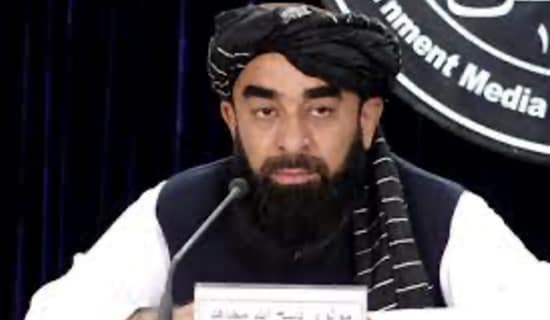Introduction
It comes as no surprise that the startling phenomenon of Islamic State (ISIS) propaganda has galvanized attention since the organization burst onto the popular imagination in June 2014, with the fall of Iraq's second city of Mosul and the resurrection of a Caliphate. By any measurement, ISIS has been a real success in surviving as a movement since it declared itself in October 2006, and its relentless and multi-faceted media campaign has, to say the least, been attention-grabbing.

Scene from "Kingdom of Heaven" in 2015 ISIS video
But ISIS propaganda does not exist in a vacuum. This propaganda is a reflection of real-life events on the ground, real victories and challenges, real news. Recent ISIS propaganda video campaigns about the Syrian refugees' flight to Europe, about calling on the Somali Al-Shabaab to join the Islamic State, and about calling for a "third intifada" among Palestinians all reflect an attempt to use its media to influence events occurring elsewhere.[1]
In Its Media Efforts, ISIS Draws From Disparate Sources
Despite the prolific nature of the ISIS propaganda machine, most media worldwide (even in Arabic, and even that of Islamists) is hostile to the Islamic State. But this is not to say that this ostensibly hostile media does not unintentionally provide a larger framing for ISIS's much more focused and targeted messaging. ISIS adventitiously adapts and uses material from mainstream media, as well as left-wing or fringe anti-American material, extreme sectarian content, and Salafi Islamist material, as part of a witch's brew of arguments and images forming an antechamber for jihad, a prepping for takfiri Salafi jihadism. This is non-ISIS content that shapes the environment for the Islamic State's own special brand.
ISIS videos are referential of the media of others, whether mainstream news media or other mainstream sources. In 2012, before it entered the most polished, current phase of its original media production, the Islamic State used news clips from pan-Arab media, from CNN (i.e. a 2007 documentary on human rights abuses by the Iraqi government) and from the BBC (i.e. a 2010 expos├® on a fake bomb detector) to make its point. Direct and indirect references to Hollywood movies and video games are still relatively common. Clips from the 2005 Ridley Scott film "Kingdom of Heaven" have been used several times.[2] And, of course, while ISIS is indeed prolific, viewers of all sorts, even potential ISIS recruits, are more likely to see material about, say, a particularly notorious Assad regime massacre of Sunni Muslims or a story involving mistreatment of Muslims from the Western media itself.

One ISIS use of (non-Islamic) fringe political discourse is clear in the highly publicized 55-minute "Return of the Gold Dinar" video extravaganza, released in August 2015 by the Al-Hayat Media Center. In addition to featuring a series of American advocates of the gold standard (including former Congressman Ron Paul), the video castigated "America and the Jews" for creating a "satanic financial system" of capitalism and denounced "a capitalist financial system of enslavement." The return of the gold dinar would, according to the ISIS video, "cast into ruins their fraudulent dollar note" and presage the destruction of the U.S. Federal Reserve System.[3]
Widespread Islamist Media Bigotry Against Non-Sunni Muslims
An even more important ingredient in the ISIS Petri dish is the extreme sectarianism promoted by a wide range of (non-ISIS or even anti-ISIS) Islamist voices. These can be antisemitic, anti-Christian, or anti-Shi'a sentiments, images, and videos which complement the antisemitic, anti-Christian and anti-Shi'a rhetoric of the Islamic State. This is speech often delivered by religious officials in otherwise good standing with the governments under which they live.[4] Often the discourse focuses on one religious group, and occasionally on all three.
On October 29, 2014 radical Saudi cleric Abdulaziz Al-Turaifi, who has more than 700,000 followers on Twitter, successfully combined an attack on all three when he tweeted that "Jews and Christians have never colluded with the Rafidah [derogatory term for Shi'a] against Islam like they are today. They used to collude in a specific country, but today [they are doing so] in every country." The irony is that Al-Turaifi is a critic of ISIS and defender of the Al-Saud regime - but that at the same time he is delivering a discourse that is almost identical to that of the Islamic State, about non-Sunnis allegedly conspiring together.

The extreme ISIS drumbeat about the "Rafidah Najas" (filthy Shi'a "rejectionists") is matched in vitriol and amplified by a range of existing private, anti-Shi'a media outlets. The Saudi-funded Al-Wesal TV[5] provides a relentless religious anti-Shia critique, and remains on the air despite occasional pressure from regional governments whenever a particularly prominent sectarian crime occurs.[6] Much of Al-Wesal's focus is, of course, on the Assad regime, on Hizbullah, on sectarian Iraqi politicians like Nouri al-Maliki, and on the leadership of the Islamic Republic of Iran, but it also compares Shi'a to dogs and apes.

But other social media sites are more modest affairs with even more poison, often combining the hatred across sectarian lines as in this headline from an anti-Shi'a webpage: "Twelver Shia adopted the Sunnah of Jews over Sunnah of Prophet Mohammad(SAWS)."[7]
Another Salafi Twitter account, this one from Sri Lanka[8] with more than 3,000 followers, and which, again, like Al-Turaifi, actually criticizes ISIS, sent, on April 13, 2015, a similar anti-Shi'a message while damning Christians and Jews with faint praise: " Rawafida r worser than Jew&Nasara bcoz, Jew&Nasara r considering d companions of their prophets r best ppl but 4 Rawafida,Sahabas r kuffar."

Sermons That Set The Stage
Still another source of indirect amplification for a targeted ISIS message is the wide range of (non-ISIS) religious discourse used by some Islamists that is readily available in social media, and whose content, whether on shari'a, sectarian relations, or prophecy, is broadly in sync with that of the Islamic State. This differs slightly from the volunteer pro-ISIS advocacy carried out by ISIS "fan-boys," as there is no obvious connection with ISIS. A common example of this would be the (more mainstream) videos of the late extremist Yemeni-American sheikh Anwar Al-Awlaki, which, while not actually calling openly for violence, prepare the mindset towards greater acceptance of the jihadi worldview. Al-Awlaki's video series on the early Islamic conqueror Umar A-Khatab comes to mind.[9]
Another recent example would be the latest speech by onetime ISIS supporter and beachcombing jihad propagandist Roberto "Musa" Cerantonio.[10] Now back in Australia and more careful with his language, Cerantonio once openly encouraged Westerners to join ISIS.[11] In his speech, posted on YouTube on October 11, 2015, Cerantonio seeks to explain that the modern-day (Kemalist) Republic of Turkey is the entity described in Islamic apocalyptic tradition as "Rum."[12] The Islamic State is obsessed by visions of the Islamic "End of Days."[13]
Cerantonio goes on to bizarrely opine - despite the fact that Turkey is 99% Muslim - that Turkish commanders prefer Christian soldiers over Muslims because they are more loyal to Turkey and that "the cross is tolerated in the Turkish Army, [but] Islam is not." He coyly goes out of his way not to actually mention ISIS, describing it vaguely but positively as "these guys" and their territory as "lands ruled by shari'a."[14]
Policymakers can and should prioritize the propaganda battle against ISIS in addition to intensifying kinetic action, but also need to be realistic enough to understand that blatant ISIS messaging is only part of a larger ideological challenge, and that ISIS propaganda is often nested or nurtured by a much wider media environment encompassing ordinary mainstream media, the entertainment media, fringe political views from the West, hardcore social media bigotry from the Muslim world and the views and attitudes of disparate Islamists worldwide. The ISIS worldview is a powerful Salafi jihadi sub-culture, but one that not only cherry-picks from the period of formative Islam, but also appropriates from a wide range of different images and sources.[15] This sub-culture is also nurtured by other influences coming from sources that may be independent of ISIS, that are closeted, indifferent, or even hostile to that organization.
*Alberto M. Fernandez is Vice-President of MEMRI.
Endnotes:
[1] MEMRI Inquiry & Analysis Series No.1187, The Islamic State's Frantic Response To The Wave Of Refugees Fleeing Syria, September 28, 2015.
[2] Liveleak.com, October 16, 2014.
[3] Economist.com/blogs/economist-explains/2015/09/economist-explains-1, September 3, 2015.
[4] MEMRI TV Clip No. 5081, Omani Cleric Salim Bin Khalfan Al-Rashidi: The Jews and Christians Spread Fornication and AIDS, August 18, 2015.
[5] Wesal.tv
[6] Gift2shias.com, September 9, 2013.
[7] Youpuncturedtheark.wordpress.com, August 27, 2015.
[8] Twitter.com/Darsalaf.
[9] Youtube.com/watch?v=oxIKHtQvGTc, June 5, 2011.
[10] Smh.com.au, January 17, 2015.
[11] Theguardian.com/technology, April 17, 2014.
[12] Youtube.com/watch?v=7x7-Gm-BzfE, October 11, 2015.
[13] Hoover.org/research/isiss-apocalyptic-vision, February 25, 2015.
[14] Youtube.com/watch?v=h9PDPaJUBP0, October 11, 2015.
[15] MEMRI Daily Brief No. 61, Mood Music For Jihad: YouTube Hosts Music Playlists Promoting Foreign Terrorist Organizations And Jihadi Ideology, October 5, 2015.





